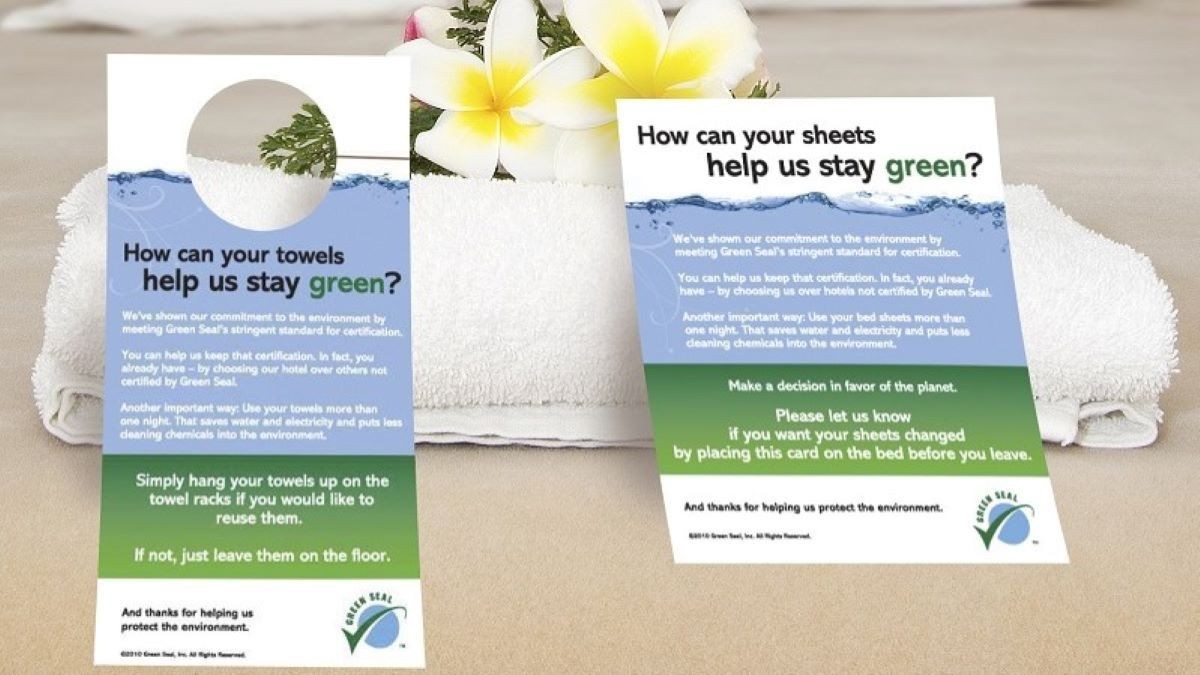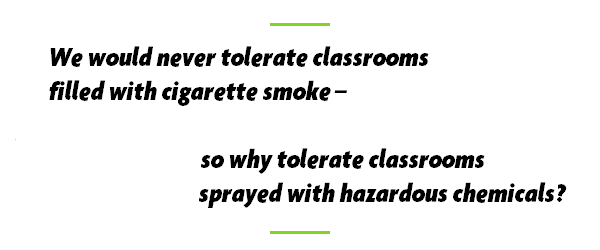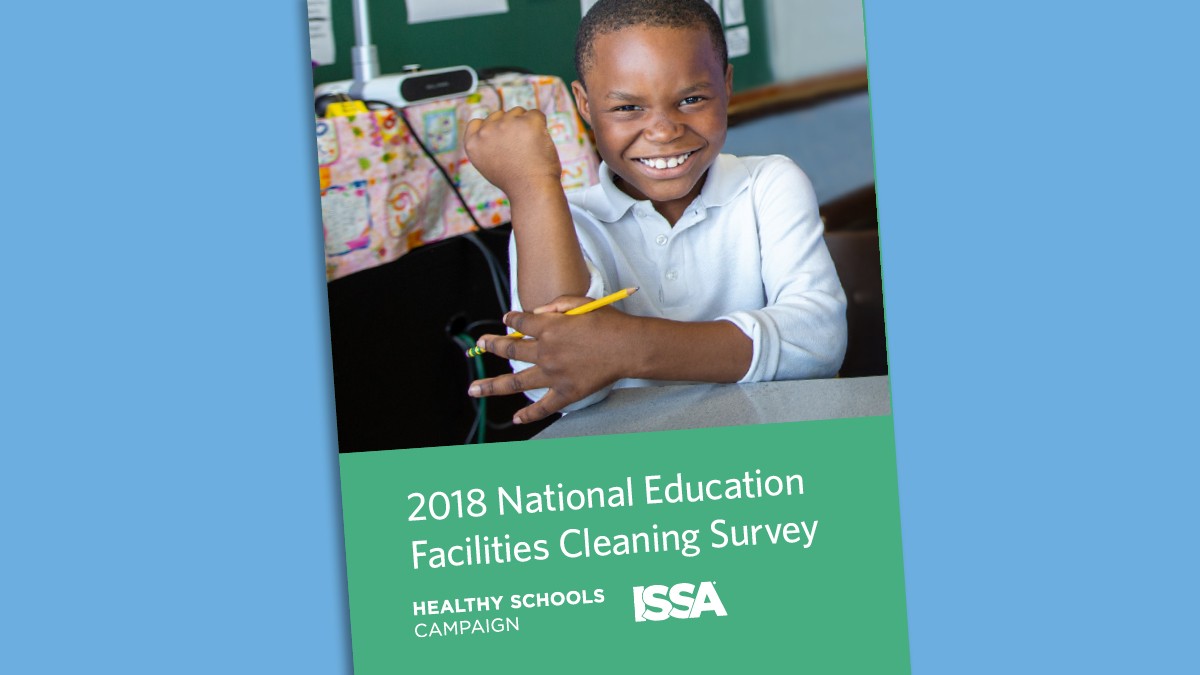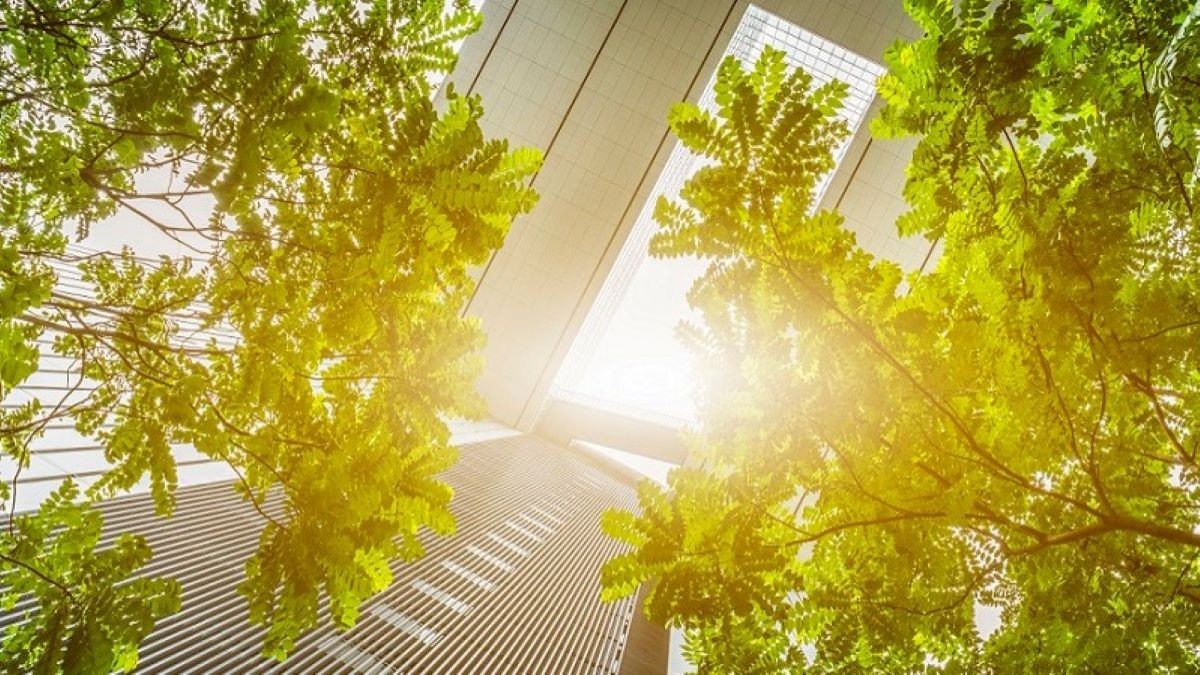What’s that smell? Deodorizer? Bleach? When you enter your hotel room for the night, you shouldn’t have to worry that the air you breathe will provoke headaches, allergies, or asthma. That’s the mindset of a growing generation of consumers who view sustainability as inextricably linked to human health – and who support hotels that do the same.
“It’s a generational shift, in my opinion,” said Glenn Hasek, publisher and editor of Green Lodging News. “Gone are the days when you had travelers who grew up smoking cigarettes and breathing smog in dirty cities. Travelers are increasingly interested in experiencing a healthy stay and being offered health and wellness options, from spa experiences at high-end hotels to something as simple as a bike sharing program that offers the opportunity to see the city on wheels instead of with a carbon-emitting vehicle.”
For the lodging industry, this shift means guests increasingly treat travel as a chance to demonstrate their commitment to health and sustainability, rather than escape from it. Figures from the Global Wellness Institute show wellness tourism growing twice as fast as tourism overall, reaching a $639 billion market in 2017. And contrary to popular belief, relatively few wellness trips are to destination spas or meditation retreats. Nearly 90 percent are regular leisure or business trips where travelers choose to participate in wellness experiences.
“Having green-friendly practices and wellness services and amenities are no longer a ‘nice to have,’ they are an expectation, particularly from the luxury traveler,” said Dant Hirsh, general manager of the Dominick Hotel, an independent luxury hotel located in New York City’s SoHo neighborhood. The company underscored its commitment to health and sustainability by earning a Green Seal Bronze certification in 2018, meeting rigorous benchmarks in areas including minimizing waste, preventing pollution, conserving energy, managing water resources and purchasing greener products. For wellness travelers, the Dominick offers partnerships with several local fitness boutiques and an on-site fitness center with Peloton bikes, and it is revamping its spa with updated suites and custom amenities that appeal to the fitness and wellness traveler.
However, hotels don’t need to offer expensive spa services to facilitate wellness for their guests, Hasek said. Simple steps like providing maps of local trails and eco-conscious soaps and amenities also contribute to a healthier stay.

Several health-related features already are mainstream at hotels worldwide. According to Greenview’s 2018 Green Lodging Trends Report, the majority of hotels now use low-VOC or VOC-free paints in renovations and additions, provide eco-conscious amenities for guests, and conduct annual carbon monoxide and radon testing. A growing number of hotels also are evaluating suppliers in human rights areas, providing portable air purifiers, and designating more than 90% of guestrooms as non-smoking.
Hasek said hotels increasingly are embedding health and wellness programs in their overall sustainability strategies, as they go hand in hand with initiatives already underway on the properties. At the Dominick Hotel, for example, equipping rooms with iPads cuts down on paper use and also allows the company to offer guests custom digital workouts.
The most successful health and sustainability programs often have staff-wide buy-in, and hotels that involve associates in their green and wellness initiatives report positive culture shifts and happier employees. At the Westin Bonaventure Hotel and Suites, a Green Seal Silver certified property in Los Angeles, associates formed a “green team” comprising representatives from each department who champion specific sustainability initiatives. Some were so inspired by the mission that they began implementing the practices at home as well, said Claudia Lambaren, the hotel’s senior sales and marketing coordinator.
Today, Westin Bonaventure associates are integral to projects including targeting zero-waste in the cafeteria, implementing a water reclamation system in the laundry facility, installing trash sorting and recycling bins throughout the property, purchasing from sustainable local vendors, recycling unused amenities through the Clean the World program, and offering business customers Westin Clutter-Free Meetings with socially conscious amenities and green features including energy efficient light bulbs, double-sided meeting pads and water pitchers instead of bottled water.
Hotel executives stress that their sustainability and wellness programs reach both to the front and the back of the house. At the Dominick, employees enjoy discounts with neighborhood fitness partners and healthy meal options at the staff cafeteria. “The employees are the heart of the house, so we strive to ensure that any benefit we launch at the hotel benefits both guests and associates.”
The Sofitel Los Angeles at Beverly Hills, a Green Seal Silver certified hotel, offers a wellness food section in their cafeteria and a free charging station for employees who drive electric vehicles. The hotel also hosts awareness campaigns employees to participate in throughout the year and celebrates Earth Hour, Earth Day, World Food Day and other national days.
“We emphasize the fact that our daily gestures have a real impact on our community, and that going green also involves a social responsibility,” said Cecile Sandral-Lasbordes, the hotel’s marketing and public relations manager. The hotel’s “green team” is dedicated to using sustainable, recyclable, energy efficient and non-toxic items throughout every aspect of the hotel’s day-to-day operations, and ensures a minimum of 50 percent of the hotel’s food purchases are from local or regional vendors. The hotel also implements a WATCH program that trains employees to recognize signs of child sexual exploitation and coordinate with local partners and law enforcement to respond.

With their Green Seal certifications, all of the hotels committed to using cleaning products that are free of harmful chemicals that can exacerbate asthma and other health conditions, a measure that is especially beneficial to cleaning associates. In fact, employers that prioritize employee health often find they are rewarded with more productive associates who take fewer sick days and cost less to insure.
“Healthier employees cost less in the long run,” said Hasek. He pointed to the innovate, self-insured employee healthcare model developed by Rosen Hotels & Resorts in Florida. The company’s health offering includes its own medical center for employees and their dependents, same-day appointments, low premiums and a strong focus on preventative health and wellness (a mandatory stretching program for housekeeping staff and other employees prone to musculoskeletal problems reduced injuries by 25 percent). The plan has already saved the company $340 million and contributed to a low annual employee turnover rate of less than 15 percent, compared to the industry-wide average of 60 percent.
Hotels are also seeing sales and marketing benefits from their health and sustainability investments as both leisure and business guests make green a requirement. “Questions regarding our green practices and wellness benefits are standard from decision-makers at companies that are looking to hold a group program here or assign a corporate account,” said the Dominick Hotel. “Having a strong stake in these initiatives gives us a competitive advantage.”
At the Westin Bonaventure, Lambaren said many of the hotel’s customers include green recycling requirements in their proposal requests. “We have seen an increase with requests for information, and we have had several groups stay with us because of our green efforts,” she said.
At the Sofitel Los Angeles at Beverly Hills, the hotel’s green and wellness standards align the property with the meetings criteria of prime businesses, Sandral-Lasbordes said. “Big corporations and technology pioneers like Google or Microsoft have substantial environmental charters in place and want their partners to be the same.”
But the ultimate business benefit of the hotel’s health and sustainability initiatives, says Sandral-Lasbordes, is the engagement of employees. “The excitement and satisfaction they portray when helping the community and the planet is beyond rewarding.”
Editors Note: This article was reprinted with permission from the Hotel Business







